Summary | Excerpt | Reviews | Beyond the book | Read-Alikes | Genres & Themes | Author Bio
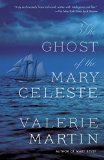
Critics' Opinion:
Readers' Opinion:
First Published:
Jan 2014, 320 pages
Paperback:
Feb 2015, 320 pages
 Book Reviewed by:
Book Reviewed by:
Sarah Sacha Dollacker
Buy This Book
Orange Prize-winning Valerie Martin creates a haunting tale of love in The Ghost of the Mary Celeste. Working with historical accounts of the accident, which occurred in 1872, Martin inhabits the world of spirits, sea voyages, and familial separations to discover how we process the pain of death. Though not a ghost story per se, the narrative is full of haunting elements, such as seances, that help create a chilling atmosphere.
The novel is built around three storylines, which revolve around and intertwine with each other, creating suspense. After the Mary Celeste, an American cargo vessel is found abandoned and floating near Spain, the world is seized by the mystery of what happened. The ship is in good seafaring shape, and there is no sign of forced entry or violence on board. Nonetheless, the crew and passengers - including the captain, his wife, and their two year-old daughter - have disappeared. Though the ship is salvaged, the people are never found.
Years later, Arthur Conan Doyle, a young doctor who dreams of being a writer, drifts along the African coast on a passenger ship. In the uncomfortable heat, a fellow passenger jokes that he has seen the ghost of the Mary Celeste hovering on the horizon. Intrigued by this, Doyle is inspired to write a short story, one that will fuel the imaginative and haunting power of the ship's mystery. Indeed, Doyle's story is so captivating that many confuse his storytelling with historical fact, brightening the glow of legend already surrounding the tragic vessel.
The third plotline unfolds on the shore of Lake Pleasant in New York. Years after its publication, Doyle's story is found by Violet Petra, an enigmatic young medium who may have a personal connection to Captain Briggs of the Mary Celeste and his wife, Sarah. Violet's success in Spiritualist circles has garnered the attention of sceptics, including Phoebe Grant, a journalist intent on revealing Violet as a fraud. Sir Arthur Conan Doyle, now known as the creator of the ever-popular Sherlock Holmes, is also interested in Violet's abilities. Though both Doyle and Grant attempt to disprove Violet's ability to contact the dead, they find it hard to explain her uncanny skill.
Violet's conversations with the dead were not out of place in a 19th century society fascinated by Spiritualism, a heretical religion that espoused the belief that there is never-ending life. (See 'Beyond the Book') In a world with poor medical care and high mortality rates, the notion that it was possible to contact loved ones after they died was comforting. In the novel, the obsession with Spiritualism unites otherwise disparate plot elements - Violet Petra, Arthur Conan Doyle, the Mary Celeste. Suffused through these storylines is a core tenant of Spiritualism: an overarching desire to understand death, and in some cases, to transcend it.
The characters' unique qualities are captivating - Violet's performances at seances come to mind. Yet it is the descriptions of life at sea that are truly brilliant. The novel opens and closes with ship voyages. Details about women living on board and the challenges of raising children - either taking them along or leaving them home - while at sea offers fascinating insights into a little known world.
When some characters, such as Violet and Doyle, take center stage, Martin tries to keep the focus not on their individual stories but the ways in which multiple stories can connect and tangle to create larger meaning. Questions asked in one section are answered in another, for example. Despite this, at times the book reads more like a collection of interrelated short stories than a novel.
Martin does not take authorial license and answer the novel's mystery definitively, but the conclusion suggests a satisfying resolution. The Ghost of the Mary Celeste is transportive, a haunting tale not to be missed.
![]() This review was originally published in The BookBrowse Review in February 2014, and has been updated for the
February 2015 edition.
Click here to go to this issue.
This review was originally published in The BookBrowse Review in February 2014, and has been updated for the
February 2015 edition.
Click here to go to this issue.

If you liked The Ghost of the Mary Celeste, try these:
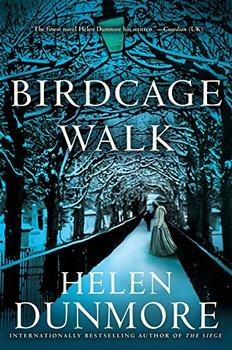
by Helen Dunmore
Published 2018
Weaving a deeply personal and moving story with a historical moment of critical and complex importance, Birdcage Walk is an unsettling and brilliantly tense drama of public and private violence, resistance and terror from one of our greatest storytellers.

by Craig Cliff
Published 2017
Playfully literate and strikingly original, an unforgettable debut novel about art, imitation, and obsession.

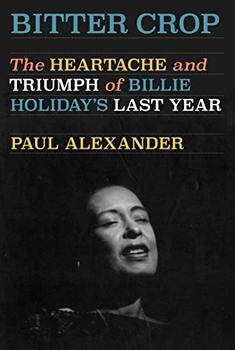
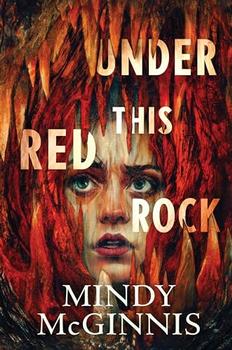
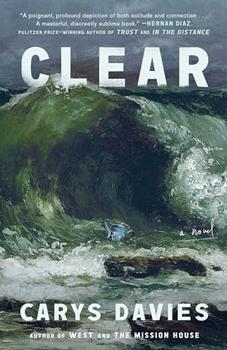

The Flower Sisters
by Michelle Collins Anderson
From the new Fannie Flagg of the Ozarks, a richly-woven story of family, forgiveness, and reinvention.

The House on Biscayne Bay
by Chanel Cleeton
As death stalks a gothic mansion in Miami, the lives of two women intertwine as the past and present collide.

The Funeral Cryer by Wenyan Lu
Debut novelist Wenyan Lu brings us this witty yet profound story about one woman's midlife reawakening in contemporary rural China.
Your guide toexceptional books
BookBrowse seeks out and recommends the best in contemporary fiction and nonfiction—books that not only engage and entertain but also deepen our understanding of ourselves and the world around us.